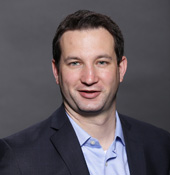Daniel Fabbri, Ph.D., assistant professor of Biomedical Informatics and Computer Science, has been awarded a $1.7 million research grant from the U.S. Department of Defense to create an automated clinical documentation system for use in battlefield ambulances and helicopters.

Fabbri and his team will attempt to create a simple electronic medical record fed exclusively by data from video cameras installed in transport vehicles and motion sensors (accelerometers) worn by medics. In light of the noisy conditions that apply in battlefield patient transport, use of audio sensors and automated voice recognition is ruled out.
“We’re proposing to leverage a combination of off-the-shelf cameras and wearable sensors to capture motion signatures and report in real time not just the general level of activity among medics, but also specific patient interventions such as the duration of cardio-pulmonary resuscitation, how many IV bags were hung, whether a breathing tube or chest tube was placed,” Fabbri said. “We further propose using this type of passively gathered information to automatically generate a triage score indicating severity for each patient.”
Trauma teams in field hospitals are too often hobbled by lack of information about incoming wounded, according to one of the project’s co-investigators, U.S. Navy Medical Corps Commander and Afghan War veteran Jesse Ehrenfeld, M.D., MPH, professor of Anesthesiology, Health Policy and Surgery and associate professor of Biomedical Informatics.
During his tour as a combat anesthesiologist in Kandahar, Afghanistan, “Information I received about incoming casualties was limited to what might fit on a sticky note or be hastily scrawled with Magic Marker on a forehead or chest,” Ehrenfeld said.
“With this project we’re working toward automatically capturing events that are critically important to communicate upstream,” he added. “And whether it’s a patient being brought to Vanderbilt by ambulance or a service member being taken to a field hospital, similar challenges apply for communication. This project will have profound implications for both military and civilian patients and their care teams.”

















